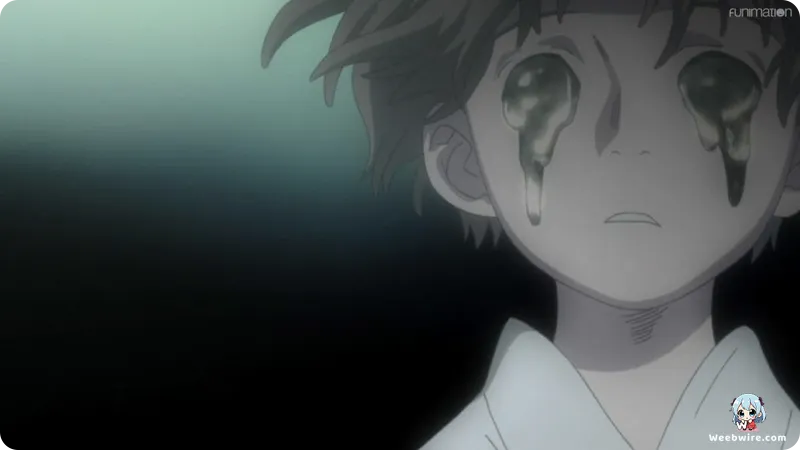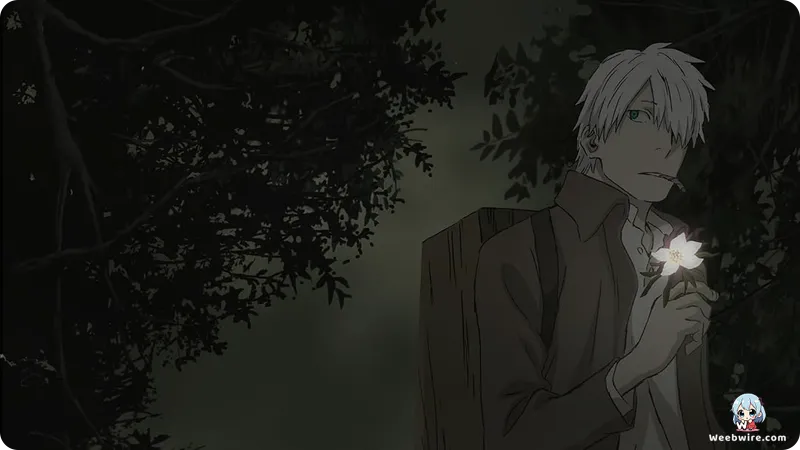The Ecological Enigma: Unearthing the Essential Lore and Hidden Production Secrets Behind the MUSHI-SHI Masterpiece

Few anime series successfully combine profound philosophical inquiry with serene, episodic storytelling in the manner of MUSHI-SHI. The 2005 anime adaptation, produced by Studio Artland and based on Yuki Urushibara's influential manga, intentionally deviates from typical supernatural conventions.
Instead of focusing on intense confrontations, the series immerses viewers in a meditative world centered on Ginko, a Mushi Master. Ginko's role is to navigate the delicate ecological balance between humanity and the enigmatic life forms known as Mushi. These beings are explicitly defined not as demons or spirits, but as life in its most rudimentary state. They are often described as protozoa or elemental spirits, existing in the ambiguous space between living and non-living matter.
The Ecological Foundation of Mushi
Creator Urushibara deliberately framed the Mushi as natural phenomena, comparable to environmental events such as floods or diseases. Conflict with humans arises purely from proximity and existence, rather than any inherent malice. This fundamental refusal to villainize the central conflict is the cornerstone of the series' unique perspective on environmental coexistence and existence itself.

Ginko's Essential Lore and Transformation
Beyond the deep ecological themes, the lore surrounding the protagonist, Ginko, contains crucial details often overlooked by casual viewers. Ginko, recognized by his distinctive white hair and striking green eyes, was not born with these features. His original name was Yoki.
His transformation occurred following a traumatic encounter with a powerful, sound-consuming Mushi known as the Ginko Mushi. This incident consumed his original memories and appearance, leaving him permanently altered. The name Ginko itself serves as a lasting echo of this transformative event. His prominent green eyes are vital, symbolizing his heightened connection to the Mushi world and allowing him to perceive them clearly.
Furthermore, Ginko’s constant, nomadic existence is not a matter of choice but a necessity. It is driven by the herbal cigarettes he perpetually smokes. This smoke functions to suppress the powerful aura he emits, which inevitably attracts Mushi. To safeguard local human communities, Ginko must maintain a continuous movement pattern, preventing a dangerous concentration of these primal beings in any single location.
Production Excellence and Narrative Structure
The production quality of the series solidified its status as a masterpiece. Director Hiroshi Nagahama and Studio Artland prioritized atmosphere and naturalism throughout the adaptation. This included unconventional production choices, such as an intense focus on the soundscape.
The series utilizes extended periods of silence, punctuated only by meticulously detailed ambient sound. This sophisticated foley work captures the rustle of leaves, the flow of water, and the distant calls of nature, grounding the fantastical elements in a visceral reality.
Reflecting the manga’s origins as a successful short story, the anime maintains a deliberate episodic structure. It functions effectively as a collection of traditional Japanese Kaidan, or folk tales. This narrative choice compels the audience to focus intently on the immediate moral and ecological dilemma presented in each vignette, rather than relying on continuous character progression or a dominant overarching plot. Coupled with the series' beautiful watercolor-like backgrounds and its subtle grounding in historical, mid-Edo period Japanese aesthetics, MUSHI-SHI remains a unique and lasting testament to nuanced supernatural storytelling.
Credits
MUSHI-SHI
Author
Yuki Urushibara
Cover Art
Yuki Urushibara
Studio
Artland
Publisher
Kodansha
Producers





